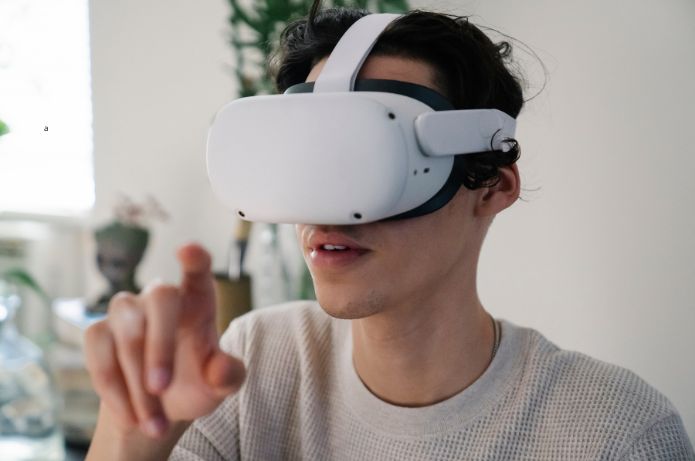Virtual reality (VR) and augmented reality (AR) headsets are not new concepts. Even so, many brands are not betting on the power that this type of technology, enabled and specialized for creating experiences, holds. In an increasingly digital market, it is the duty of marketing CMOs to explore the potential of these resources to create a share of memory in their target audiences, contributing to enriching experiences and a significant increase in customer attraction and retention.
Although they may seem like quite modern technologies, their fundamental ideas were already being explored in the 20th century, with several attempts to create devices similar to those we have on the market today. The Oculus Rift, for example, was one of the pioneers in popularizing VR, with its first version launched in 2013, 12 years ago. In parallel, augmented reality is also gaining ground with devices and applications that integrate digital elements into the physical environment, further expanding the possibilities for interaction and immersion.
One example of a case study involving AR was a campaign undertaken by IKEA, a well-known international furniture brand. They developed an app that allowed users to visualize the furniture they wanted in their environment, giving them more confidence about the space it would occupy and how it would fit into the overall ambiance. Through this AR app, IKEA took a significant step in addressing a pressing need for people who are captivated by furniture they discover online.
Another example that can be highlighted is the campaign carried out by Volvo. The company used virtual reality to offer users a test drive of the XC90 model directly through their cell phones, promoting the experience of a "weekend getaway" via an app. The test drive puts the user in the driver's seat, driving them along a mountain road. The campaign generated a significant increase in requests for information about the vehicle, exceeding 20,000 app downloads.
Given the large number of companies that have already explored these technologies and achieved very positive results, the entire market is projecting enormous advances and investments in their applications. According to research published by ResearchAndMarkets.com, as proof of this, the Virtual Reality market is expected to jump from US$43.58 billion in 2024 to US$382.87 billion by 2033, driven by a compound annual growth rate (CAGR) of 27.31% between 2025 and 2033.
As this is a field still under development and with forecasts of continued growth, it's time for small and medium-sized companies to start investing in and taking advantage of the benefits that advertising campaigns related to this technology offer. As technology increasingly dominates the market and fundamental product differentiation becomes scarce, creating an unforgettable experience for your audience can be decisive for achieving a Lifetime Value . Remember, of course, that acquiring new customers will always be more expensive and difficult than retaining an existing customer base.
In this sense, seeking to utilize new technologies that are increasingly being incorporated into people's lives is not only an interesting strategy, but a necessary one for companies aiming for continuous growth. Virtual reality is just one of the "new" tools available in the toolkit of marketing companies to be implemented, from the moment entrepreneurs approve such actions that break the mold.


